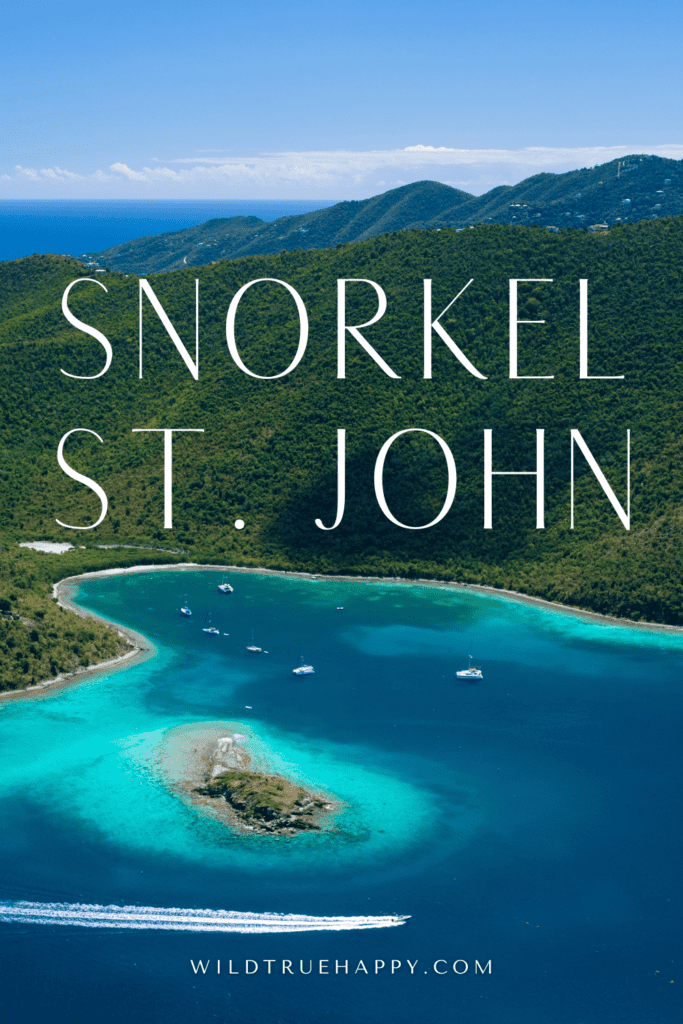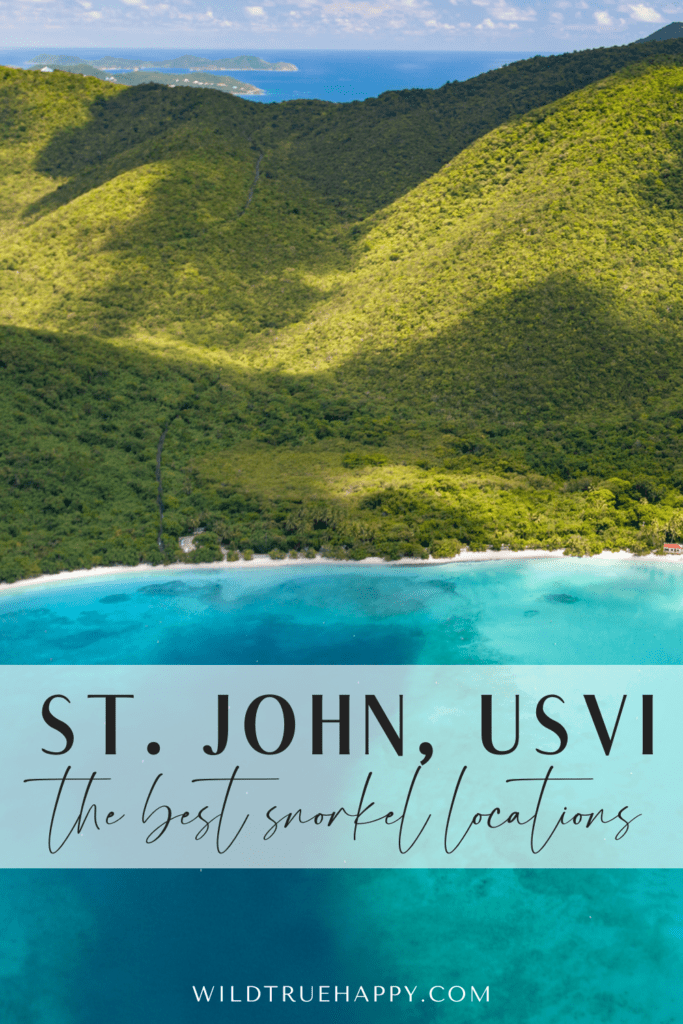BEST Snorkeling in St John USVI
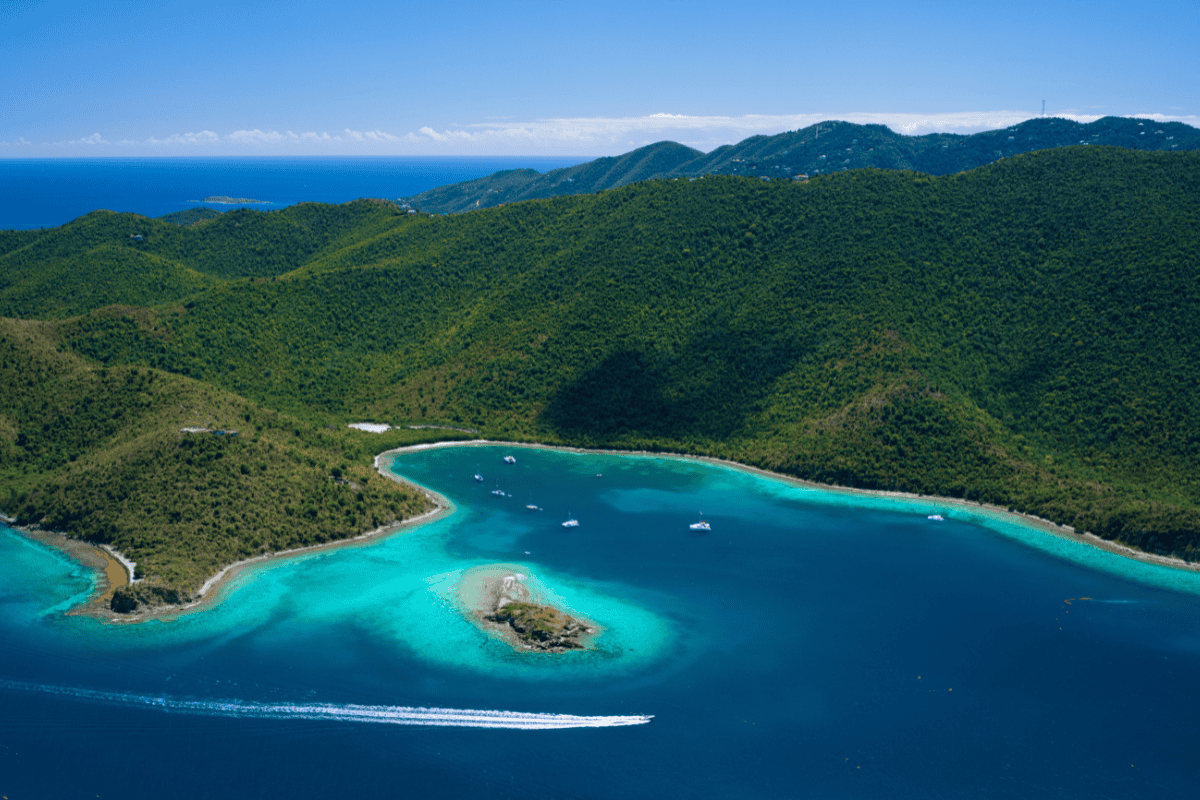
Pack your swimsuit and sense of adventure as we explore the BEST snorkeling in St John USVI. From turtles and sea life to beautiful beaches and vibrant corals, I am sharing the best places to snorkel on the island of St. John.
St. John is the smallest of the three main US Virgin Islands and one of the most untouched, beautiful islands in the Caribbean. Over sixty percent of the island is designated as a National Park and Monument, meaning less development and, yes, fewer tourists! The Virgin Islands National Park & Coral National Monument offers protection to coral reefs, seagrass beds, mangroves, and other marine habitats.
With over a dozen virtually crowd-free, white-sand beaches and protected marine areas, St. John has some of the most pristine and easily accessible snorkel locations in the Caribbean. So let’s dive in and explore the BEST snorkeling in St John USVI.
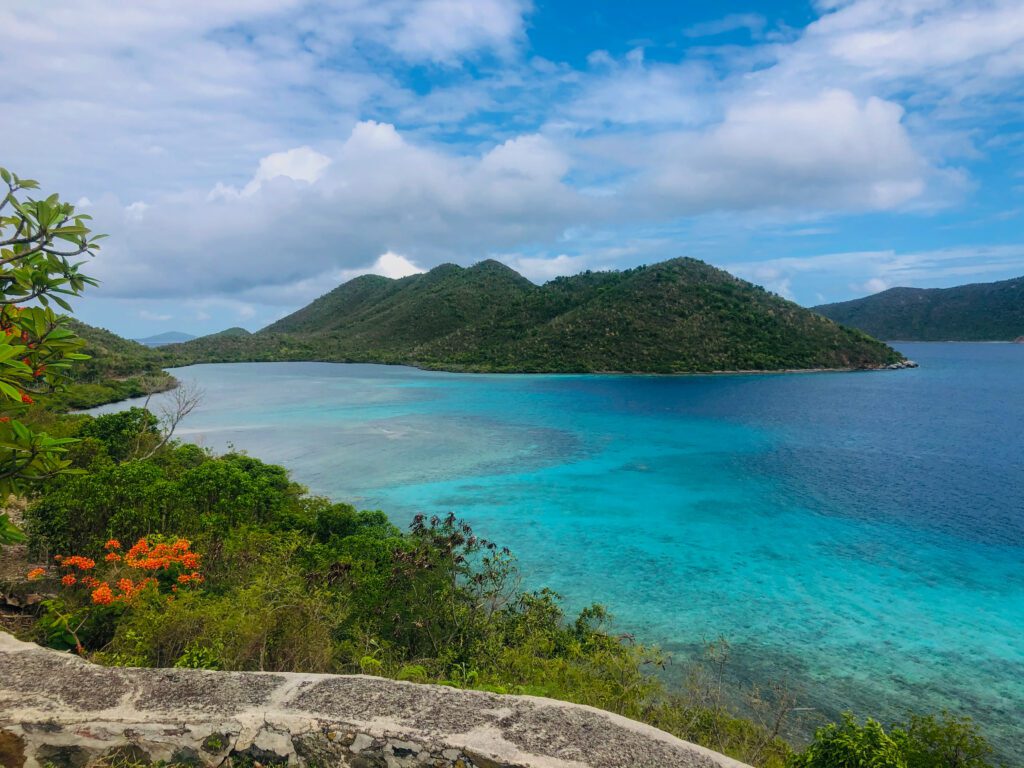
Snorkeling Basics
Equipment Needed for Snorkeling
The great news is that you only need a few pieces of equipment for snorkeling: a snorkel, mask, and fins. However, children, beginners, or snorkelers in locations with a current or deeper water might also prefer a flotation device.
For years, we have used Cressi snorkel sets and fins, which can be purchased on Amazon. The gear has held up nicely, and we love the convenience of owning our equipment.
If you would prefer to purchase or rent snorkel gear when you arrive, you can find snorkel gear in Cruz Bay, and snorkel rentals are available at Trunk and Maho Bay within the park. You’ll likely pay a premium, as with most on-island purchases, but it is an option that some travelers prefer.
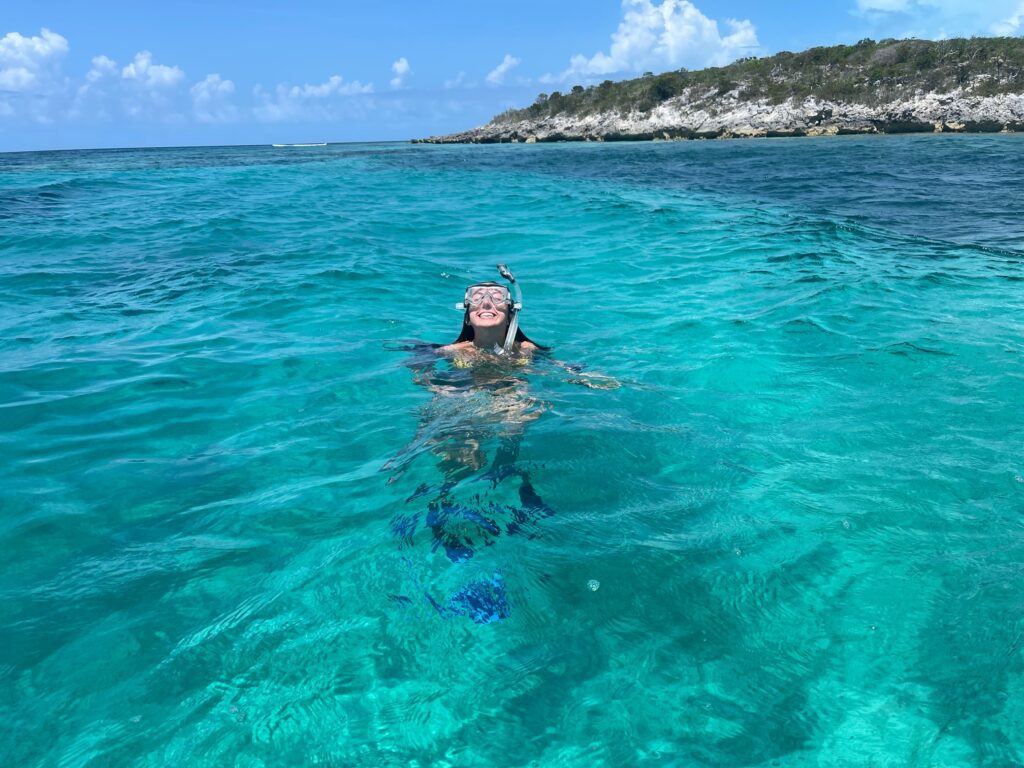
Tips for Snorkeling Success & Safety
Snorkeling can be so much fun, but you must adhere to a few safety precautions and tips to truly enjoy your experience.
- Safety First: Always snorkel with a buddy, wear REEF SAFE sunscreen, and choose a location that matches your skill level and experience.
- Respect Marine Life: Do not touch or disturb marine animals or coral. Not only can you damage the corals, but some animals (and even coral) can sting or be dangerous if provoked.
- Bring Your Gear: While many beaches offer snorkel gear rentals, bringing your own mask, snorkel, and fins ensures a comfortable and personalized experience.
- Test your Equipment: Make sure your mask and fins fit properly and are in good condition. Test your snorkel to ensure it’s functioning correctly. Once you begin snorkeling, do not fidget or remove your mask, or you risk fogging.
- Stay close to the shore: If you’re new to snorkeling, stay in shallow waters so you can quickly return to safety. The great news is that almost every beach on St. John offers this opportunity.
- Take Your Time: Snorkeling is not a race! Take slow, deliberate breaths and enjoy the underwater sights.
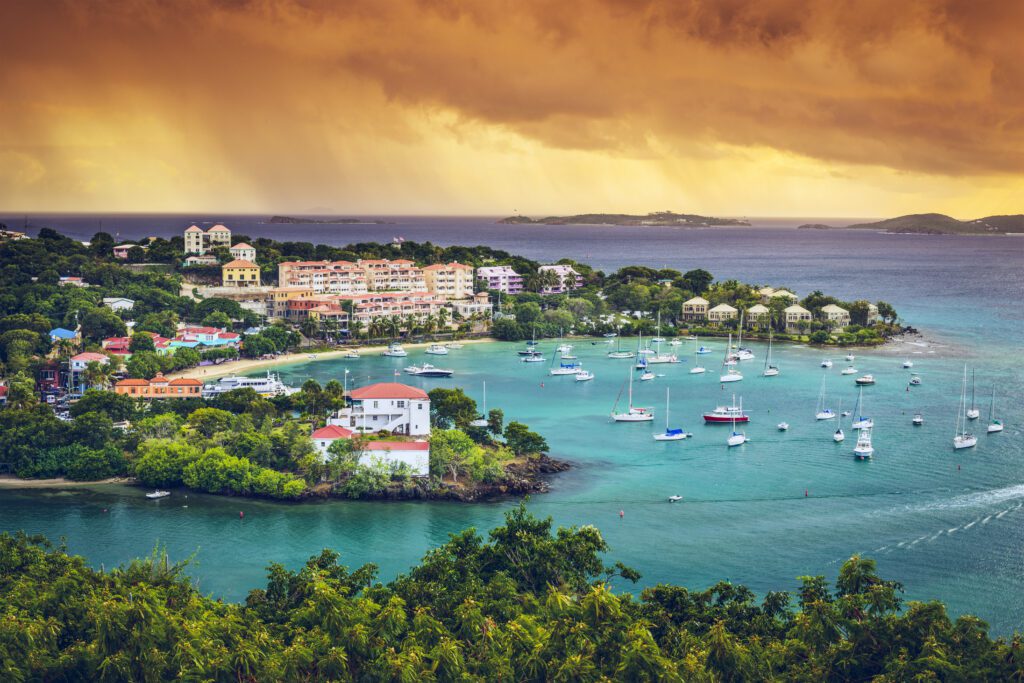
The BEST Snorkeling in St John USVI
St. John’s north shore beaches are some of the most beautiful beaches you will find in the Caribbean. Soft, white sand beaches. Calm, turquoise waters. Beaches lined with coconut palm trees. A beach lover’s (and snorkeler’s) paradise.
Trunk Bay & the Underwater Snorkel Trail
Trunk Bay is St. John’s most photographed beach. Located within the National Park, Trunk Bay is picture-perfect with its powdery white sand and bright blue waters. But Trunk Bay is also known for its underwater snorkeling trail.
The Trunk Bay underwater snorkel trail is excellent for beginners and anyone who enjoys learning about marine life. The 300-foot trail follows Trunk Bay Cay’s west side before returning to the beach. Underwater trail markers provide information about the marine life you’ll encounter, including colorful coral gardens and a diverse array of fish species, including sergeant majors, parrotfish, and blue tangs.
An entrance pass is not required to access Virgin Islands National Park; however, Trunk Bay charges an amenity fee of $5 per person for visitors ages 16 and up.
Because of its popularity, Trunk Bay can get crowded due to tours and visitors from neighboring St. Thomas. To make the most of your visit and enjoy a less crowded snorkel experience, arrive early in the day.
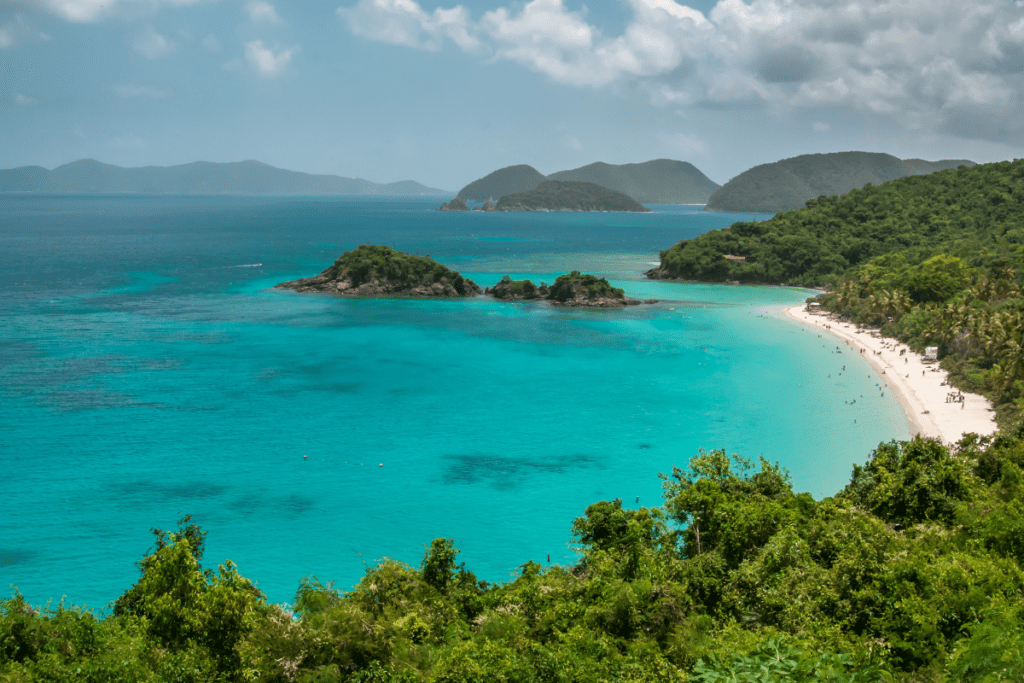
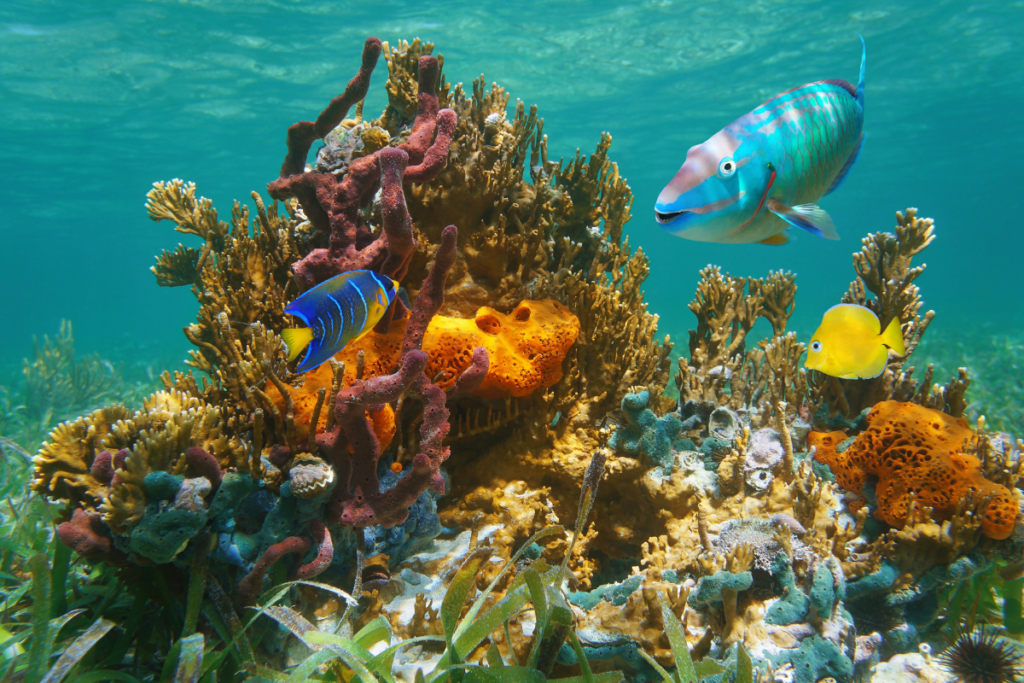
Maho Bay, St. John
Maho Bay is a personal favorite of mine on St. John. Known for its tranquil atmosphere and calm, shallow waters, Maho Bay is the place to go for sea turtles!
Situated five miles from the town of Cruz Bay, Maho Bay is a north shore beach within the National Park. The narrow sandy beach has plenty of sun, shade, and amenities such as paddleboard rentals, a food truck, and a bar. It is a popular destination for families and snorkelers.
For snorkelers, if you are hoping to see sea turtles, Maho Bay is the place to be. Seagrass beds in the middle of the shallow bay provide a welcoming habitat for sea turtles. Along Maho Bay’s eastern and western edges, the rocks and reef are home to abundant fish populations, including angel fish.
To make the most of your visit to Maho Bay, arrive early in the day to snag a seat under the trees. We prefer the east end of the beach: fewer people and better snorkeling. While snorkeling with sea turtles is a magical experience, DO NOT disturb, chase, or attempt to touch them. Just enjoy the beauty of observing sea turtles in their natural habitat.
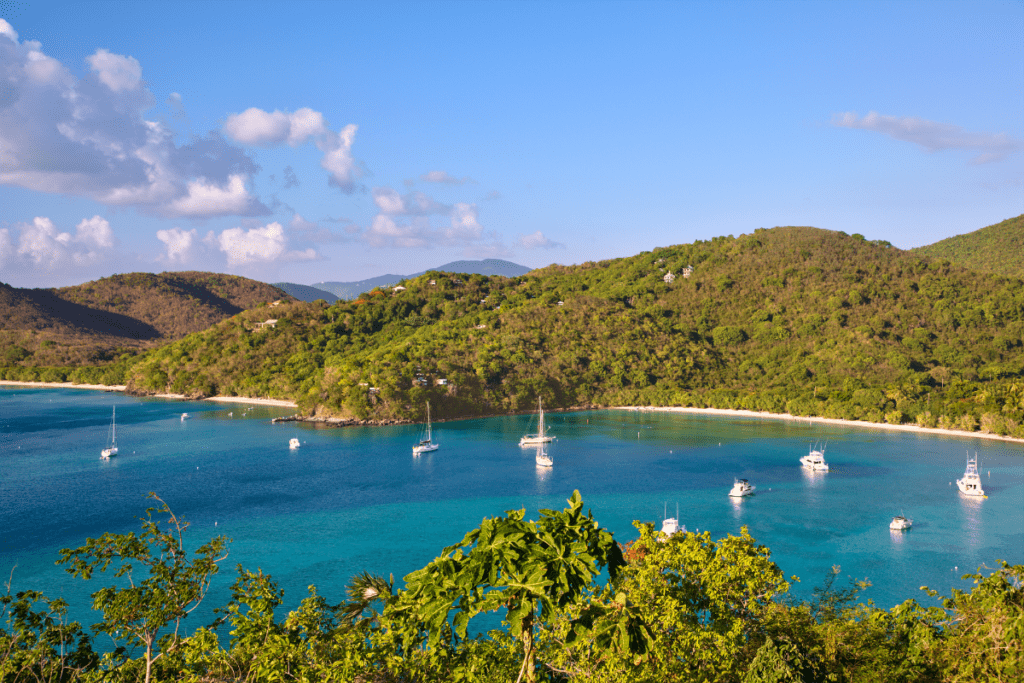
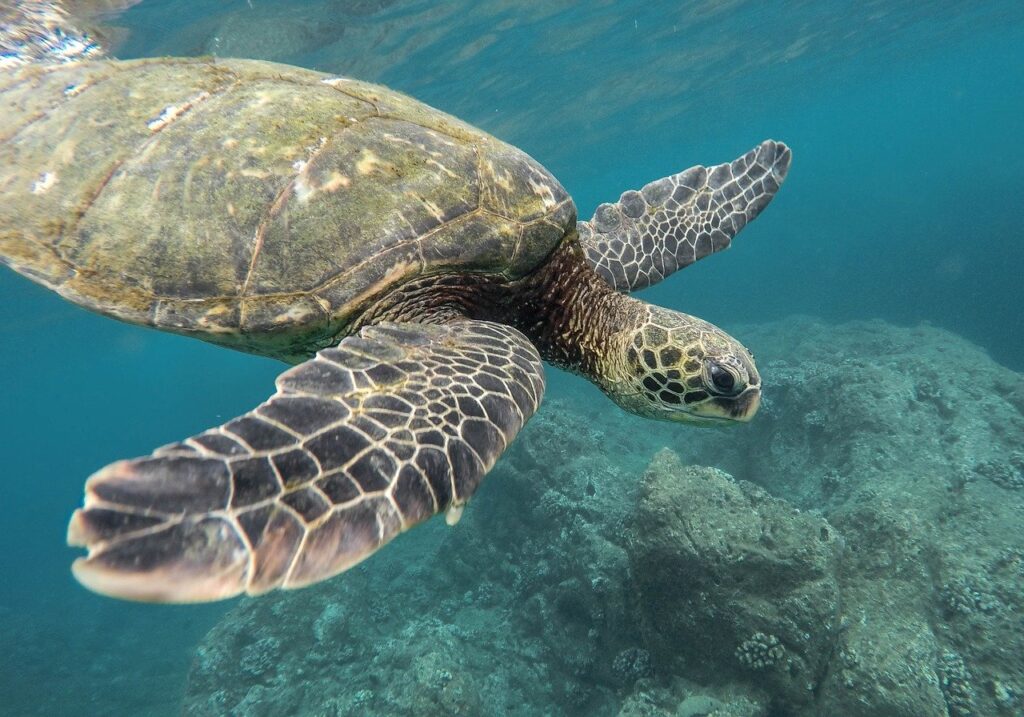
Waterlemon Cay
For those seeking a more adventurous snorkeling experience, Waterlemon Cay offers some of the best snorkeling on the island.
Waterlemon Cay is located east of Maho Bay, near the Annaberg Ruins. Accessible via a scenic one-mile hiking trail from Leinster Bay, this secluded cay is a snorkeling adventure.
Snorkelers at Waterlemon Cay will encounter tropical fish and rocky outcroppings, with occasional sightings of turtles, nurse sharks, and reef sharks.
To make the most of your Waterlemon Cay snorkel experience, wear proper footwear for your walk, bring plenty of water, and adhere to a few safety precautions. While this is a popular destination for snorkel boat charters, it is a remote snorkel location with strong currents.
To avoid strong currents, prevailing opinions suggest to snorkel the cay counterclockwise. However, we still encountered currents. Water conditions and currents can change, so use caution when snorkeling Waterlemon Cay, wear a flotation device if needed, and never snorkel beyond your abilities.
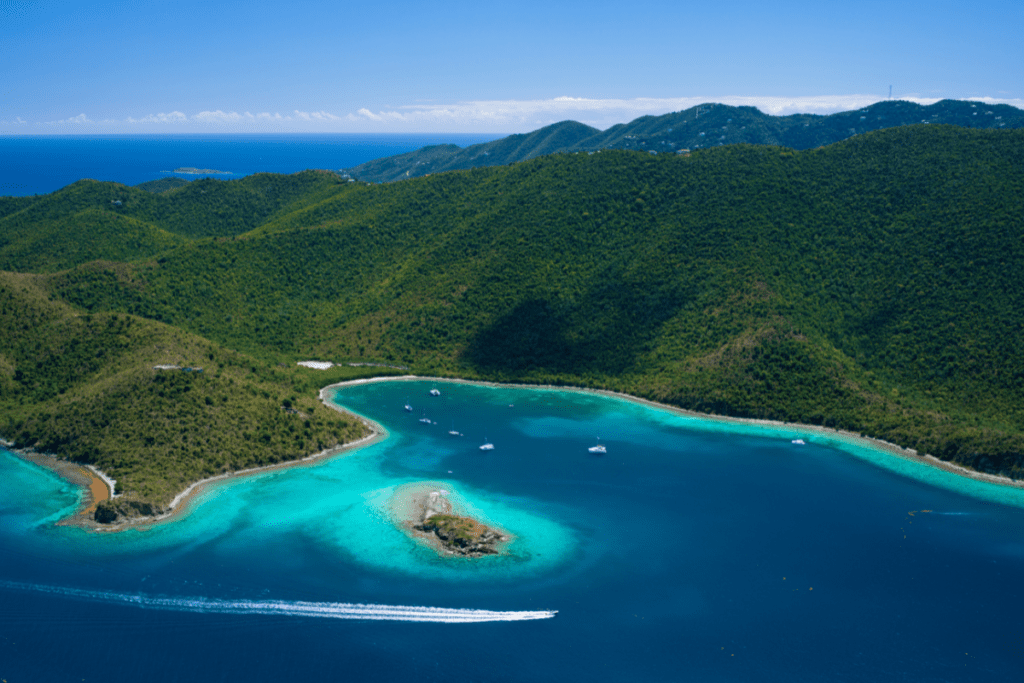
Hawksnest Beach
Hawksnest Beach is on the north shore of the National Park. It is another popular St. John destination known for its dramatic coastline, treelined beach, and turquoise waters.
When it comes to snorkeling, Hawksnest Beach is less protected than other locations. Beginner snorkelers may find this location more challenging as the surf tends to kick up a bit here.
Look for the breaking surf off the beach’s center shoreline to locate the reef. A short swim from shore and you will reach the reef.
To snorkel the reef at Hawksnest Beach, venture to the left or right of the breaking surf to snorkel along the reef’s outer edges. Underwater, you’ll discover an array of corals and fish, including parrotfish, angel fish, and sergeant majors. Hawksnest Beach promises an unforgettable snorkeling adventure in St. John.
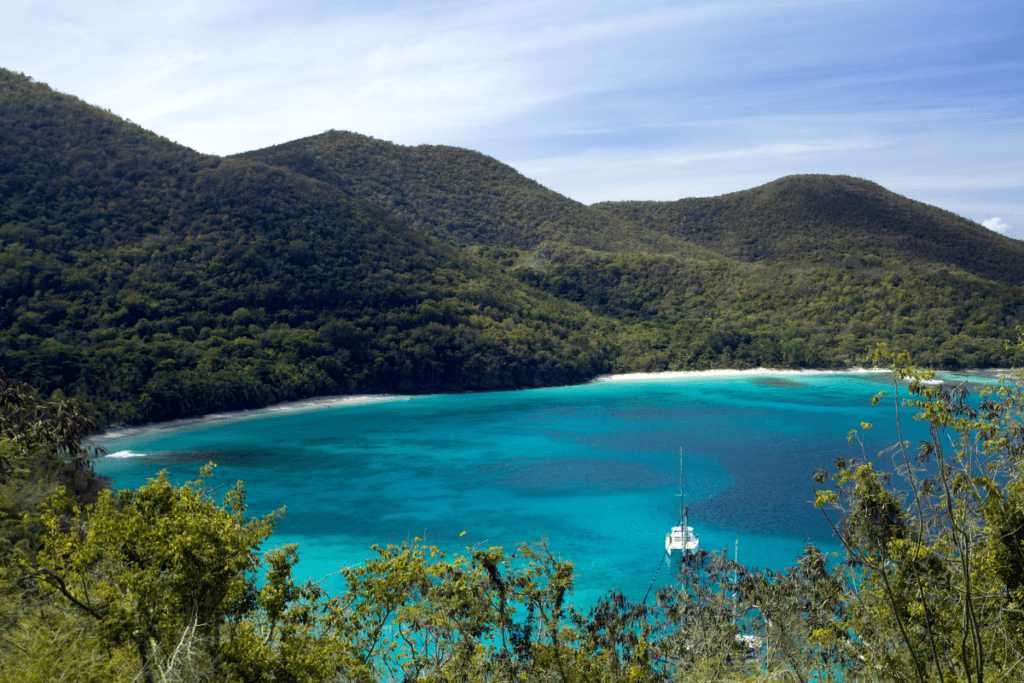
Gibney Beach, St. John
Gibney Beach (also referred to as Oppenheimer Beach) is an off-the-beaten-path beach on St. John’s north shore. With less than a handful of parking spaces, you’ll want to arrive early if Gibney is on your list.
The waters at Gibney Beach are calm and serene, perfect for snorkelers of all skill levels. The best places to snorkel at Gibney are near the rocks on the eastern and western edges. The rocky coastline provides a protected habitat for colorful fish and some coral.
Whether leisurely snorkeling or simply relaxing on the sun-drenched shores, Gibney Beach makes you feel like you’ve discovered your own deserted beach.
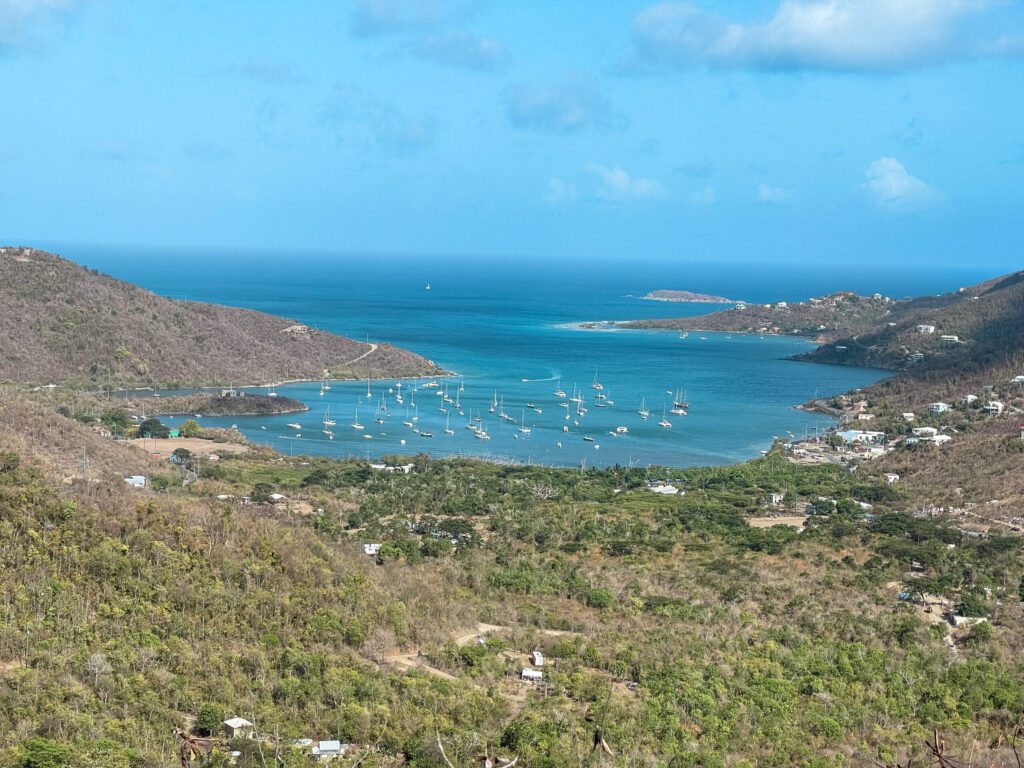
St. John East End Beaches & Snorkel Locations
The beaches on St. John’s east end, near Coral Bay, offer a chance to experience the island’s natural beauty in a more remote and tranquil setting. From shore snorkeling at Salt Pond Bay to mangrove snorkeling in Coral Bay, explore the quieter side of St. John.
Haulover South
Haulover Bay (Haulover South) is one of St. John’s eastern beaches and a hidden gem for snorkelers seeking tranquility and seclusion. The shore consists of pebbles and broken coral. Large boulders line the eastern and western shores of the bay.
The best snorkeling at Haulover South will be along the rocks on the Eastern side (left when looking at the water). Look for turtles and rays along the grassy ocean bottom. As you near the rocks, keep an eye out for squid and larger, deeper-water fish.
Haulover South is in Coral Bay, just beyond Virgin Islands National Park. This remote beach has limited roadside parking and no bathroom facilities. However, a trip to Haulover South will not disappoint.
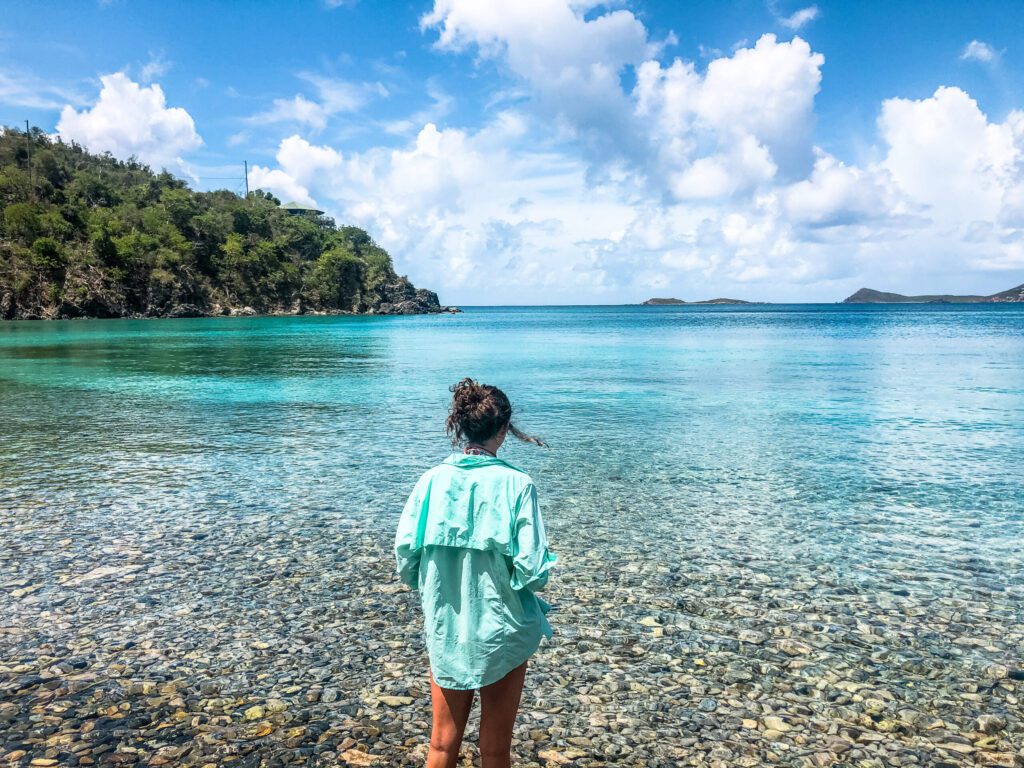
Salt Pond Bay Beach Snorkeling
Salt Pond Bay is a south-facing beach near Coral Bay, requiring a drive and a hike to reach. It is a short (and hot) hike to the beach, but well worth it for the snorkeling offshore here. It offers a long white sand beach and snorkeling along the rocky shorelines.
To reach the beach, you have a ½ mile hike from the parking area, which tends to dissuade some tourists. This is a good thing! While you won’t have the beach all to yourselves, it is far less crowded than some north shore beaches.
Snorkeling tends to be the best along the rocky shoreline, where you will spot a variety of fish. If you’re searching for sea turtles and stingrays, look in the grassy seabeds in the middle of the bay.
For more advanced snorkelers, there is a beautiful reef in the center of the beach, where two sets of rocks rise above the water’s surface. The reef was healthier than other locations, with an array of fish. Word of caution: it is a LONG snorkel to reach the rocks, so for added safety, consider a flotation device, and remember to never snorkel beyond your abilities.
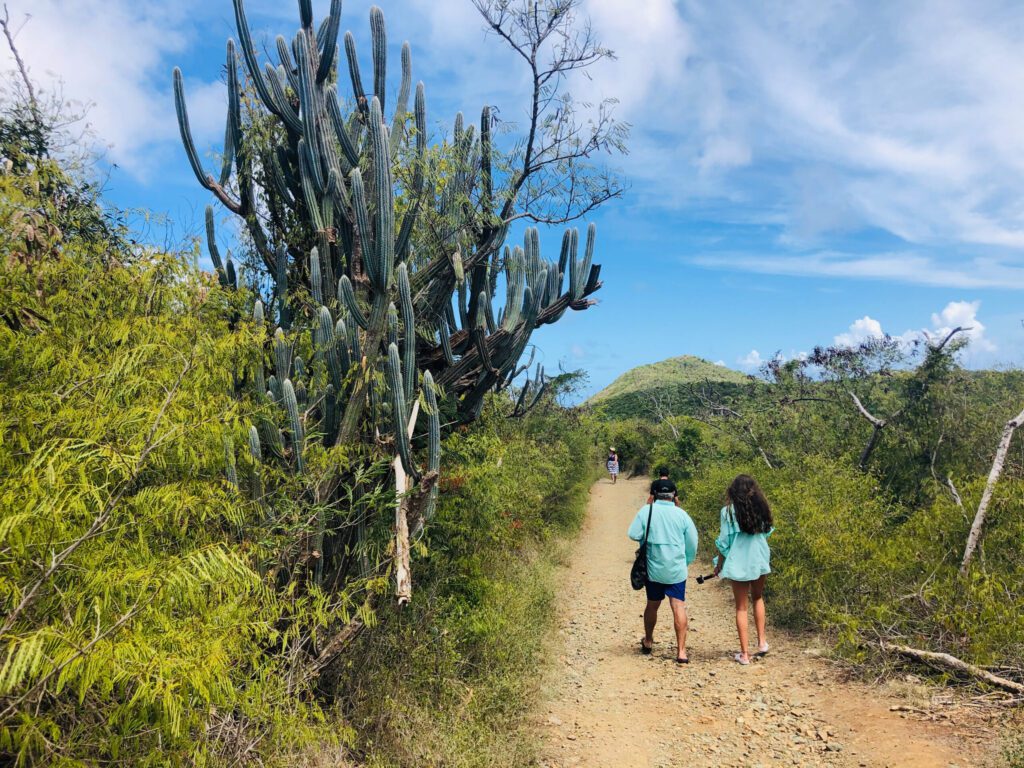
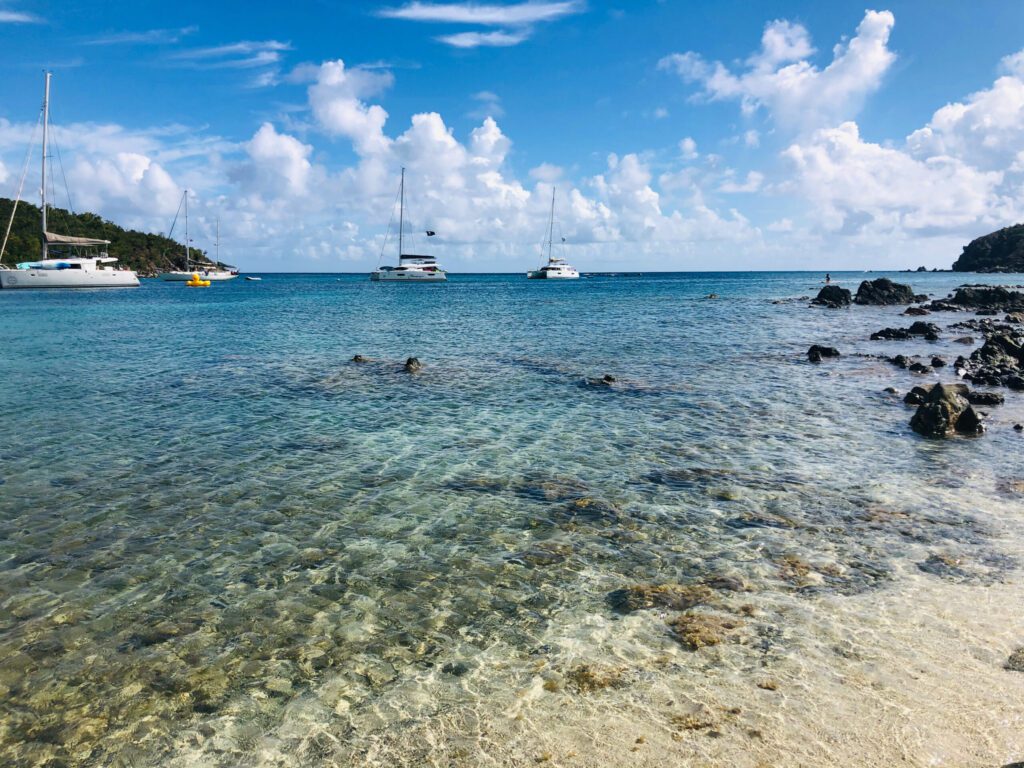
Snorkel Locations to Reach By Boat
You will need a boat to reach several snorkel locations that are not accessible from shore. To reach these locations, you can rent a dinghy and captain yourself or charter a boat.
Chartering a boat allows you to explore remote coves, hidden bays, and pristine coral reefs that may not be easily accessible from shore. Snorkel excursions can be tailored to suit your needs. Captains know the best snorkeling spots around St. John, so you’ll have a great time!
From dinghy rentals to boat charters, there are various companies to choose from in Cruz Bay, St. John’s most populous town, and Coral Bay.
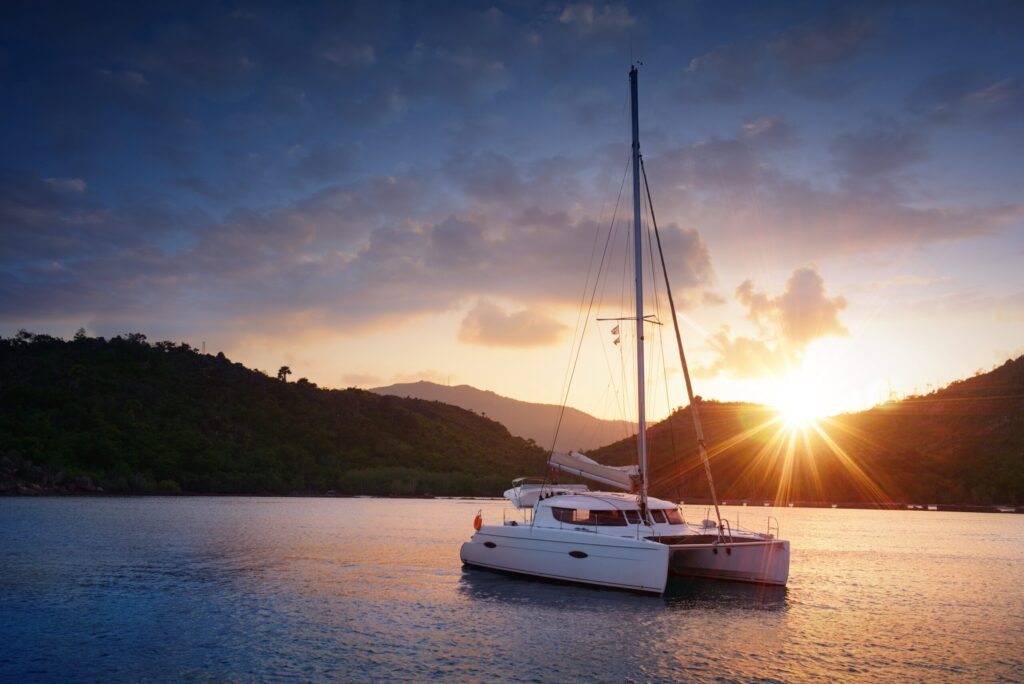
Mangrove Snorkeling in Coral Bay, St. John
Who knew mangrove snorkeling could be so good? We certainly didn’t! For a completely different type of snorkeling, snorkel the mangroves in Coral Bay.
Along the shore, mangrove roots extend deep below the water, creating a complex ecosystem of corals and diverse marine life. We rented a dinghy in Coral Bay to reach the snorkel locations (they provide a map and instructions), and we were off on an adventure.
From the boat, it doesn’t look like much, and in fact- I thought it looked a little creepy, but wow- what a delightful surprise. We spotted varieties of fish, turtles, barracudas, squid, and even a nurse shark.
If you are looking for a truly unique snorkel experience, add mangrove snorkeling to your list, and if you have time, visit LimeOut, Coral Bay’s famous floating taco bar.
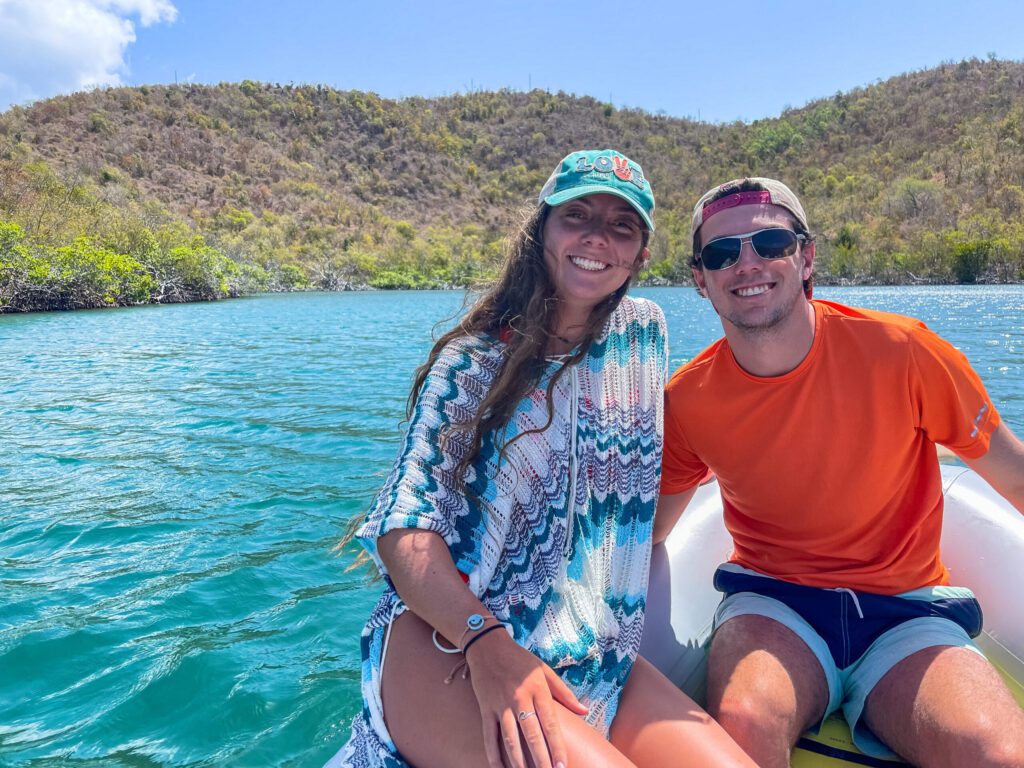
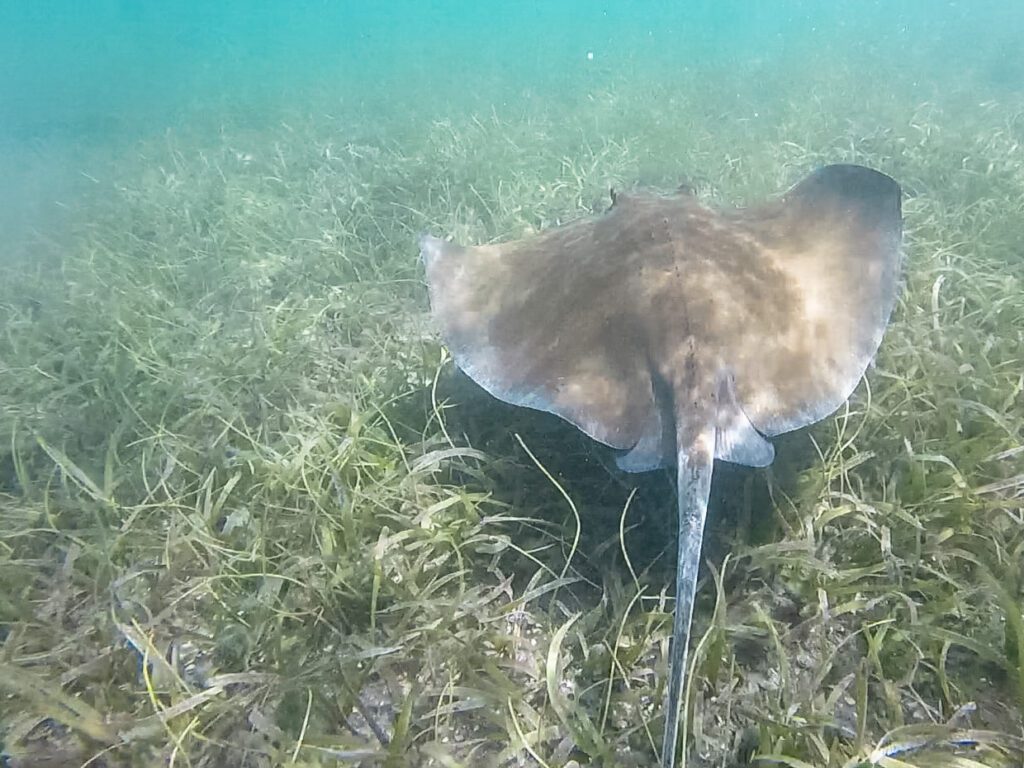
Henley Cay Snorkeling
Hands down, Henley Cay offers the best snorkeling in St John USVI, but it is not for the faint of heart. Henley Cay is one of the more advanced snorkel locations, as you can encounter current, and the water is deep.
Snorkeling at Henley Cay is an adventure. You’ll be treated to a vibrant, healthy reef and abundant sea life. Every time we have snorkeled Henley Cay, we spot at least one nurse shark.
To reach Henley Cay, you’ll need a dinghy or boat charter. While we opted to rent a dinghy for a day and visit Henley Cay and other snorkel locations, Henley Cay is also frequented by snorkel charters.
As mentioned here, the currents can sometimes be strong, so use a proper flotation device. If you rent a boat, inquire about Henley Cay snorkel conditions and follow their safety recommendations. And if you do have an opportunity to snorkel Henley Cay, enjoy your adventure!
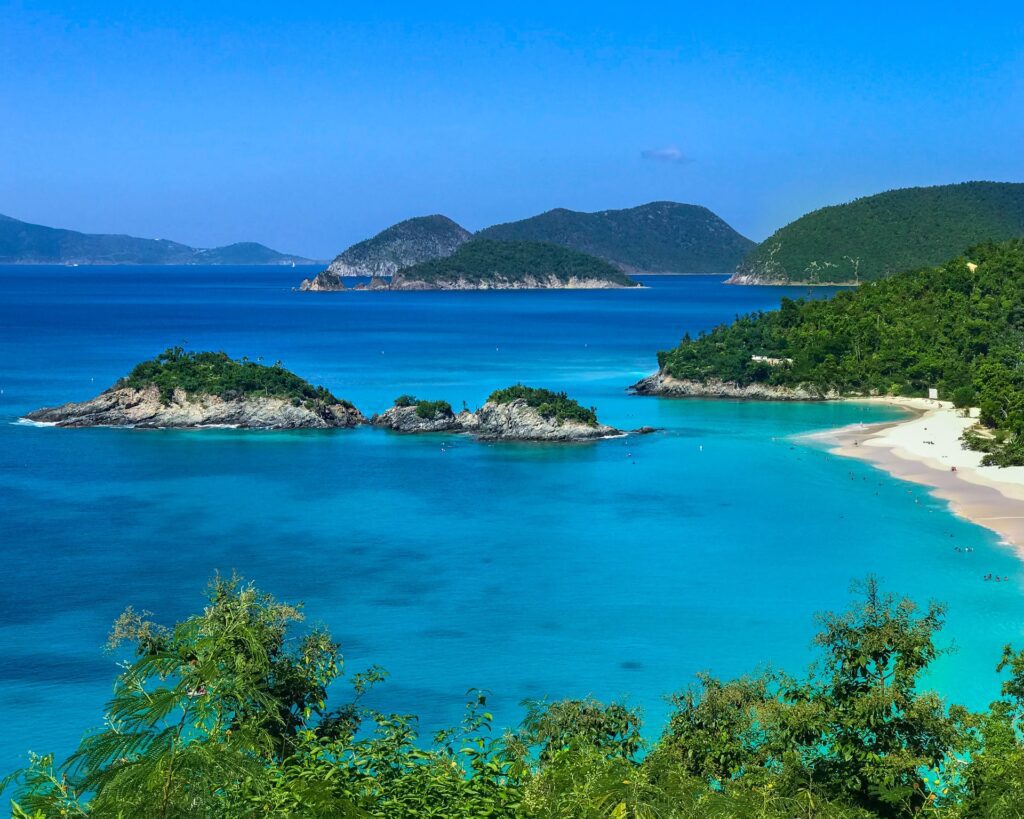
St. John Reef Conservation
Coral reefs and marine ecology are fragile, and we all must do our part to contribute to the St. John conservation efforts! Help protect the coral reefs and contribute to St. John’s conservation efforts with reef-safe sunscreen, use proper moorings and access channels for beach entry, and never touch or stand on the coral.
Did you know it takes about two years for coral to grow just one inch? If you stand or touch the coral, not only could you injure yourself, but you could accidentally break this fragile, very slow growing, coral. When snorkeling, avoid snorkeling over shallow coral areas to avoid any risk of coming in contact with the reef.
In 2017, St. John was hit by not one but two consecutive hurricanes, Hurricane Irma and Hurricane Maria. The island took a beating and suffered extensive damage not only to the island’s infrastructure but also to coral reefs, marine life, and mangroves. The island has been significantly restored, but the reef restoration efforts continue.
To learn more or contribute to the St. John conservation efforts, there are several organizations on the island, including the Virgin Islands National Park, US Virgin Islands Conservation Society, Virgin Islands Nature Conservancy, Coral Bay Community Council, and the Friends of the Virgin Islands National Park. Let’s keep St. John beautiful for generations to come!
Final Thoughts
Snorkeling in St. John, US Virgin Islands, is a magical way to experience and view nature. Whether you’re exploring the Trunk Bay snorkel trail, swimming with the turtles at Maho Bay, or visiting a handful of the other locations for the best snorkeling in St John USVI. St. John has an adventure waiting for you!
Save to Pinterest:
